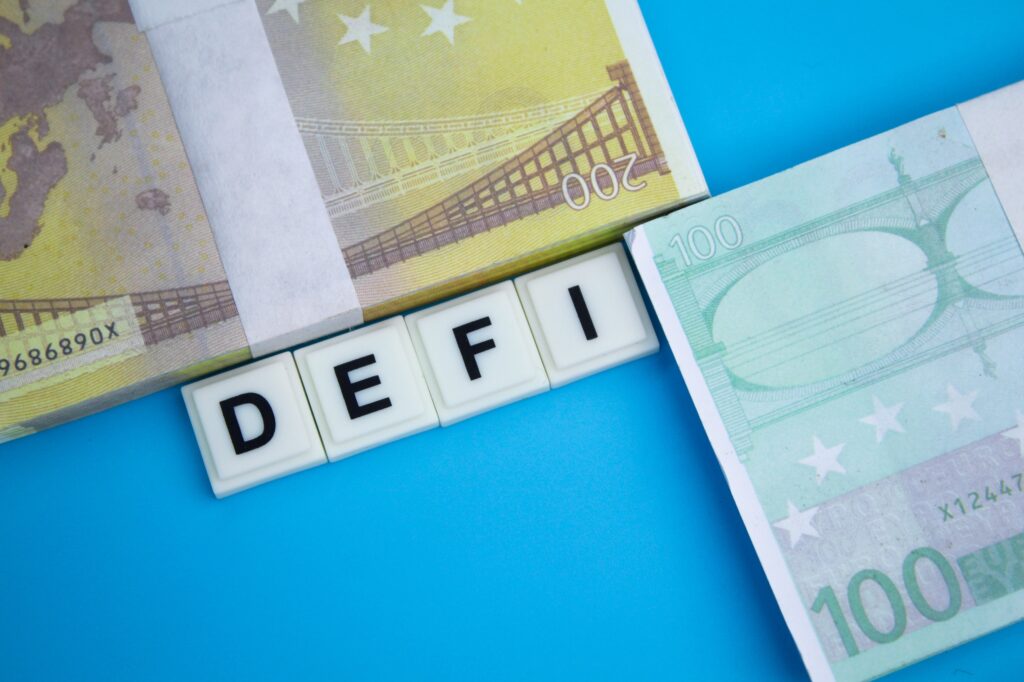2021 was a great year for cryptocurrencies, with pretty much every token in green, as this new asset class became the talk of the town globally. However, the scenario changed drastically as we entered 2022, with the crypto space seeing some of the biggest failures and wipeouts. This not only caused a liquidity shortage but has brought the scrutiny of regulators to crypto.
Despite such chaos and all the anti-crypto talks, everyone agreed that crypto is a disruptive force, for better or worse. So, as the world grapples with how to regulate the sector, Europe is trying to be at the forefront of this transformative wave with MiCA, a comprehensive framework that will harmonize the crypto industry and can give the EU a competitive edge over the US which lacks regulatory clarity.
However, Europe comprises 27 EU member states, each having its own distinct approaches to regulating crypto. On the one hand, Switzerland, Estonia, and Malta have welcomed blockchain and crypto with open arms, positioning themselves as crypto-friendly destinations. On the other hand, major financial centres like London, Frankfurt, and Paris are still working out the details regarding just how they can leverage these technologies for economic growth.
The crux of the matter is, as with any disruptive force, challenges persist. As such, the European Union faces the complex task of balancing innovation with investor protection and financial stability amidst the rising interest in cryptocurrencies.
Crypto Regulation in EU Countries

Among EU countries, Switzerland, in particular, has emerged as a leading destination for crypto-related businesses, thanks to its favourable regulatory environment that offers clear guidelines for the sector that got it the moniker “Crypto Valley.”
Malta, too, is in the race. In fact, it has long been regarded as a crypto-friendly jurisdiction thanks to its comprehensive legislation to attract crypto businesses. Similarly, Estonia has embraced digital innovation and has implemented a digital residency program.
France lawmakers meanwhile recently agreed to tone down the restrictions on a bill that would have severely restricted locally-registered cryptocurrency companies from using influencer marketing.
The United Kingdom, now outside the EU, is working on its own crypto and stablecoin rules, similar to MiCA. The UK government has proposed several measures to establish a “robust world-first regime strengthening rules around the lending of crypto assets, whilst enhancing consumer protection and the operational resilience of firms.”
As per the proposals, tougher transparency requirements on crypto exchanges will be enforced while relaxing strict rules on crypto advertisements. The UK Treasury has said that it is committed to enabling technological change and innovation.
However, regulation takes time, and it’ll be years before Parliament approves the measures. Meanwhile, the Financial Services and Markets Bill, which would recognize crypto as regulated products, is still making its way through Parliament.
Much like in Europe, crypto laws and regulations are currently fragmented and varied in Asian countries. For instance: countries like China have banned crypto mining while Hong Kong has emerged as the biggest crypto-friendly region, which recently gave the green light to retail crypto trading and had been taking several initiatives to become a crypto hub.
Japan, which was among the earliest countries to regulate crypto exchanges, had some of the strictest consumer protection legislation following the Mt Gox hack in 2014 and the CoinCheck hack in 2018. But it is now working on changing that by exempting token issuers from corporate tax on unrealized gains.
Meanwhile, India is yet to have a comprehensive regulatory framework for crypto assets. However, a draft legislation is reportedly in the works. Meanwhile, the Indian government has taken certain steps to bring cryptos under the scope of specific authorities and taxation. Earlier this year, all crypto-related transactions were put under the purview of the Prevention of Money Laundering Act (PMLA).
India is currently calling for consensus in the G20 grouping, where it currently holds the presidency, to have a globally coordinated policy response on crypto assets.
EU Makes Way for Crypto

While countries are struggling to regulate the crypto sector, the European Union recently approved the landmark Markets in Crypto Assets (MiCA) legislation, which introduces a framework for crypto companies. The law will come into force in July 2023 but won’t be applicable until January 2025.
In the meantime, the EU watchdog, the European Securities and Markets Authority (ESMA), is preparing to have another way to add more clarity in a rapidly evolving regulatory environment. Until MiCA’s implementation, the ESMA states investors and companies should act carefully.
The European Commission first introduced MiCA in September 2020 as part of its digital finance strategy. MiCA was unanimously approved in April 2023 by European deputies to introduce stricter rules on stablecoins, ensure the implementation of anti-money laundering (AML) and data security procedures, and demand additional disclosure obligations for all crypto businesses.
The legislation borrows from capital markets regulation – the 2014 Markets in Financial Instruments Directive (MiFID), and doesn’t regulate decentralized finance (DeFi) or non-fungible token (NFT) activities. What MiCA does govern are utility tokens, asset-referenced tokens, and e-money tokens.
Under MiCA, entities providing crypto-related services will qualify as crypto-asset service providers. And the issuers of crypto falling under the MiCA scope will be subject to obligations such as the publication of a white paper, authorization to issue crypto-assets, compliance with certain prudential rules, and acting honestly when it comes to conflict management and prevention or maintenance of security access protocols.
Stablecoin issuers are required to meet risk mitigation requirements, while crypto custody services must ensure sufficient security and safety measures to address potential operational failures.
With banks, custodians, and asset managers wary of the reputational risk of dealing with crypto in the aftermath of the FTX collapse and ongoing crypto winter, MiCA stands to build institutional comfort with crypto as an asset class.
Overall, MiCA aims to ensure legal certainty for crypto assets while supporting innovation and fair competition. At the same time, the government aims to protect consumers and investors and provide market stability while ensuring financial stability with the new legislation.
However, MiCA regulates token issuers as entities, not token exchanges as activities, which means the requirements are on the issuer, regardless of how its token is used.
Ongoing Development in Europe

Recently, crypto exchange Gemini announced moving its headquarters to Dublin. Just this week, Gemini founders Cameron and Tyler Winklevoss confirmed that they had selected Ireland as a base to grow the company’s services across Europe.
The twins said they chose the country because of its robust regulatory system, deep talent pool, and established technology community. Gemini, which already has an office in the country with a dozen staff members, received a virtual asset service provider license from the central bank in July 2022.
While the Irish central bank chief called for a ban on crypto advertising earlier this year, this hasn’t deterred crypto companies from setting up shop there, including crypto exchanges Binance and Kraken, as well as many other blockchain and fintech startups.
According to research from August 2022, about 10% of Irish adults surveyed held cryptocurrency.
Meanwhile, Austrian-based crypto exchange Bitpanda is teaming with Coinbase (COIN) to connect the U.S.-listed exchange giant with European banks looking to offer their customers digital assets.
With this partnership, the largest US crypto exchange, Coinbase, will use Bitpanda Technology Solutions to connect directly with banks and fintech. Bitpanda already has connectivity with several banks and fintech platforms such as European mobile bank N26, UK fintech Plum, French money app Lydia, the Italian mobile bank Hype, and Austrian traditional lender Raiffeisenlandesbank.
“Banks can see the data on their payment transactions and how much of their customers’ funds have been flowing out to crypto companies,” said BitPanda COO Lukas Enzersdorfer-Konrad.
Meanwhile, Circle is working on a Euro coin or EUROC, a euro-backed stablecoin accessible globally on Ethereum and Avalanche. Similar to Circle’s US-backed stablecoins, Euro Coin is issued under a full-reserve model and is 100% backed by euros held in euro-denominated banking accounts so that it’s always redeemable 1:1 for euros.
Euro Coin is available to anyone with an internet connection and can be sent, spent, and traded around the globe 24/7, with low-cost transactions that can settle in seconds.
Crypto Adoption

When it comes to global cryptocurrency adoption, in the US, 14.8% of the population owns cryptocurrency. And it is home to the most crypto ATMs, with 17,000 recorded in 2021.
Europe is ahead of the US in this respect, as about 22% of the global crypto industry is concentrated in central, northern, and western Europe, which received $1.3 trillion worth of crypto assets, according to Chainalysis.
In Asia, China has the largest mining operations for cryptocurrencies, and around 8% of the population still owns crypto despite the government’s crackdown. Meanwhile, 11% of Japanese people own cryptocurrency compared to over 30% in South Korea. In India, around 8% of the population is invested in crypto.
As for Europe, Germany’s 9% population and 5% of Russians own crypto assets. Meanwhile, around 3% of the UK population owns cryptocurrency and has a relatively high number of Bitcoin ATMs, at over 300.
According to a global survey by Gemini, 2021 was a breakthrough year for crypto adoption. 2022, in contrast, was slower in Europe, with only 7% of those in the region who haven’t yet bought crypto were planning on buying it, as opposed to 21% globally.
Elsewhere, Slovenia has been found to be leading in crypto popularity in Europe in 2022, with 18% of the country’s population having some sort of investment in it. Croatia, Luxemburg, Bulgaria, and Cyprus also rank high in their crypto-friendly ranking, hitting investment figures of 16%, 14%, 13%, and 13%, respectively.
As for countries with lower levels of crypto investment, it seems the wealthier and more developed an EU nation, the lower the crypto-investment threshold rank. France, Germany, and Italy are at the bottom of crypto interest.
However, it’s important to note that the countries with lower levels of crypto investment tend to have higher levels of wealth on average, which might have more comparable levels of crypto investment on a dollar basis.
Another research found that the average crypto adoption rate in Africa, Europe, and North America is a bit higher than the global average of 4.2%, with Germany leading the crypto-curiousness at 53%, followed by the UK and France.
In conclusion, as we saw, crypto adoption is growing in Europe, which holds great potential to contribute significantly to the adoption and evolution of crypto assets. However, to lead the crypto revolution and unlock its full potential, Europe needs to strike the right balance between encouraging innovation and maintaining regulatory oversight to protect consumers.









